Victory borscht is a winner in more than one way. This jewel coloured beauty of a soup is rich in flavour and completely oil-free. Learn how to make this simple wartime recipe for yourself!
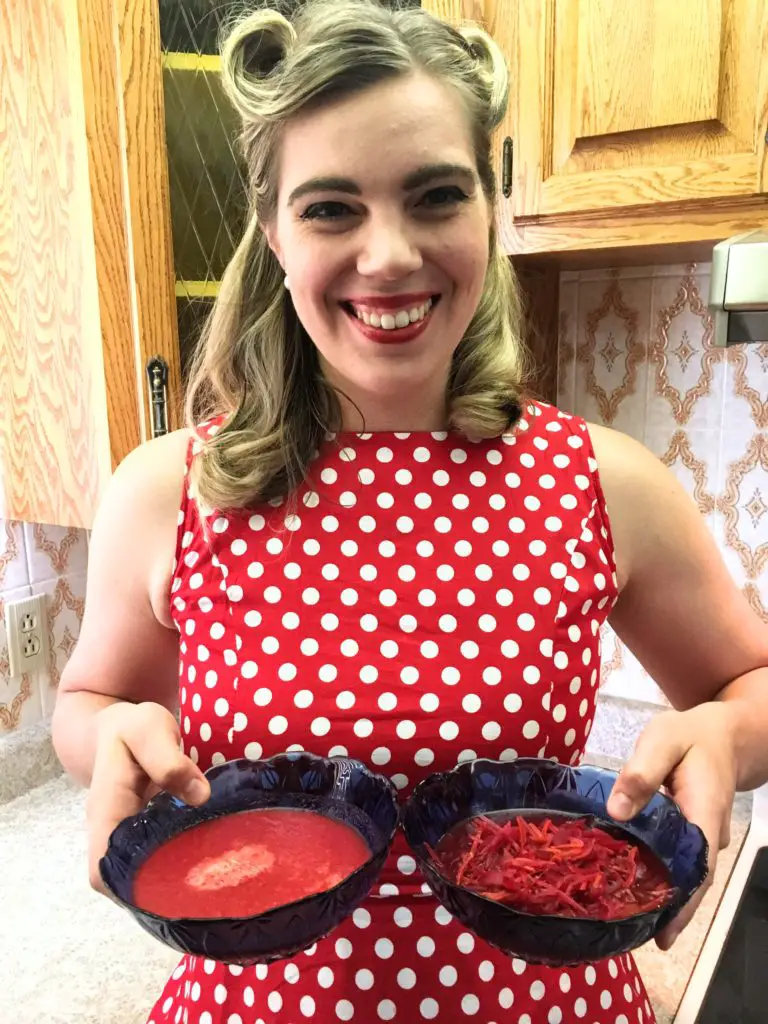
Let’s rewind back to another era. An era that’s often glamourized for the styles, gallantry and grace.
Where I am in the world, there’s abundance at every turn. There’s also so much waste that our great grandmothers would cringe. Unfortunately, many of us were simply never taught the art of being frugal.
Frugality has a negative connotation to it, doesn’t it? We know it’s a virtue, but we’re scared of how it would cramp our style.
The women who lived and worked through World War II had no choice but to be resourceful. They were self-sufficient and creative, and we can learn those skills again, too.
RELATED: WWII Food Rationing Tips
VICTORY BORSCHT RECIPE VIDEO
If this is your first time visiting the kitchen, you’re about to find out why I call my kitchen vintage… If you like my style, please consider subscribing to the Vintage Kitchen Vixen YouTube channel!
This article may contain affiliate links, meaning that if you choose to purchase something after clicking on one of the links in this post, I may earn a small commission at no additional cost to you.
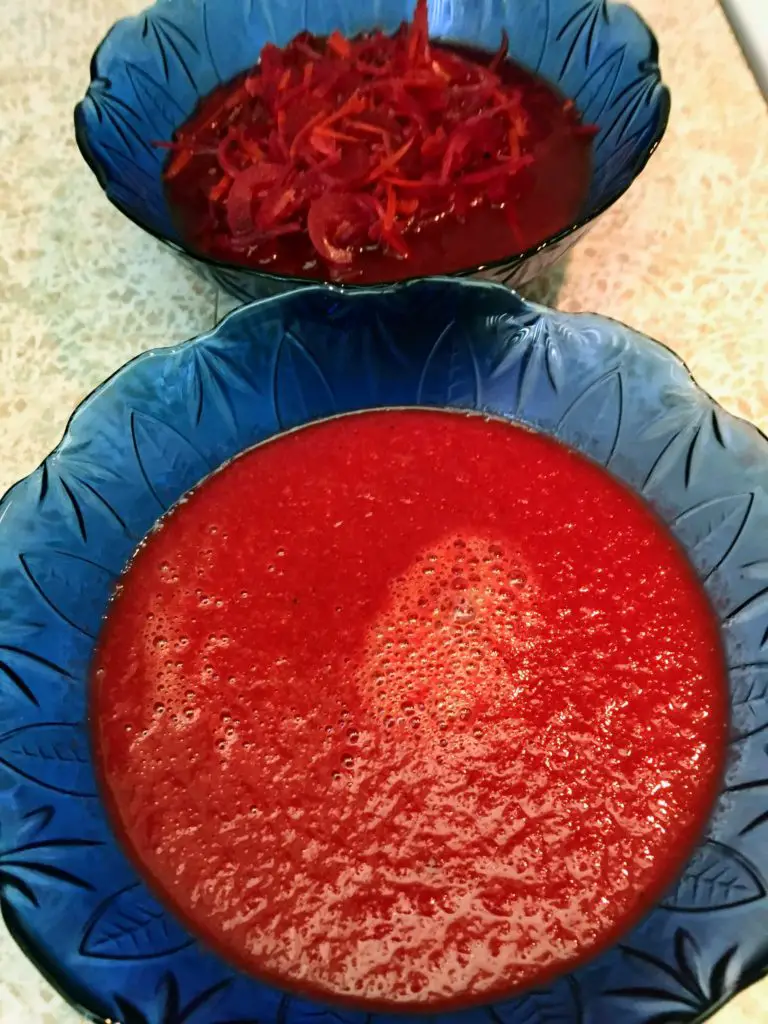
VICTORY VEGETABLES
Winston Churchill, it is said, was once shown the average joe’s rations for the week and replied that it looked like it would make a fine meal.
Can you imagine being allowed only one egg per week? If you had your own chickens, that was a different story, but for everyone else, it was reconstituted eggs.
Enter the victory garden.
Governments everywhere encouraged citizens to grow their own food because it saved precious resources.
These victory gardens, as they were called, were a necessity, because they supplemented and stretched out the rations. Since vegetables took centre stage in people’s diets, the general population was quite healthy for the most part.
I’ve written a whole other post on victory gardens, but in the meantime, let’s look at the vegetables needed for our beet soup.
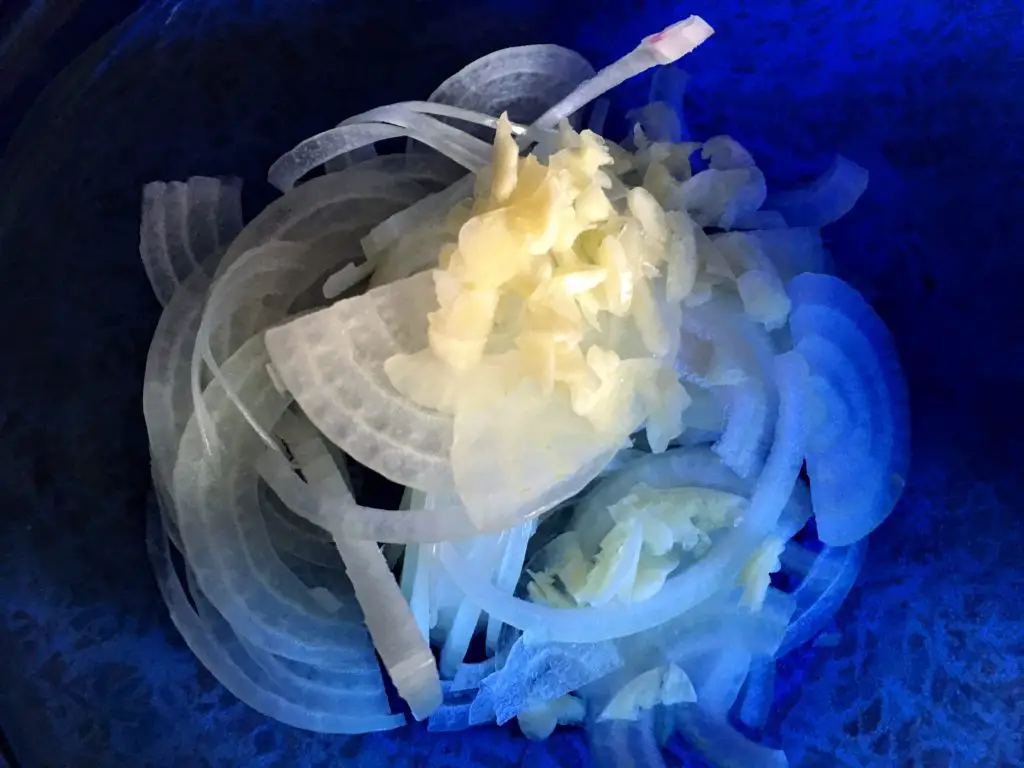
ONIONS AND GARLIC
Onions and garlic are the flavour foundations of every good soup. I don’t think I’ve ever made soup without allium. If you’re planning on keeping the borscht chunky, slice the onions and garlic thin. If you’re planning on blending the soup, either slice them or give them a chop.
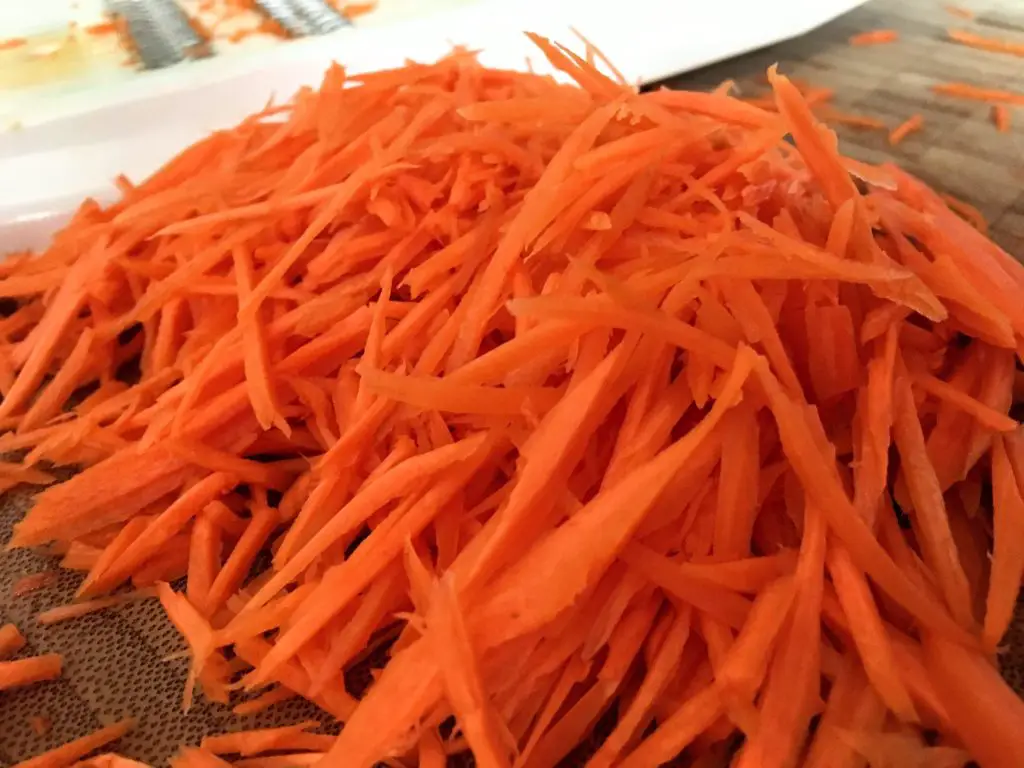
CARROTS
Two cups of carrots are needed for this recipe. That’s five medium-sized carrots or two or three large ones.
Peel them and shred them, then move on to the next ingredient.
Remember to keep the carrot peels, because those can be saved to make a homemade broth later down the road. I keep a Ziplock bag in my freezer to preserve my food scraps until I’m ready to whip up a quick batch of stock.
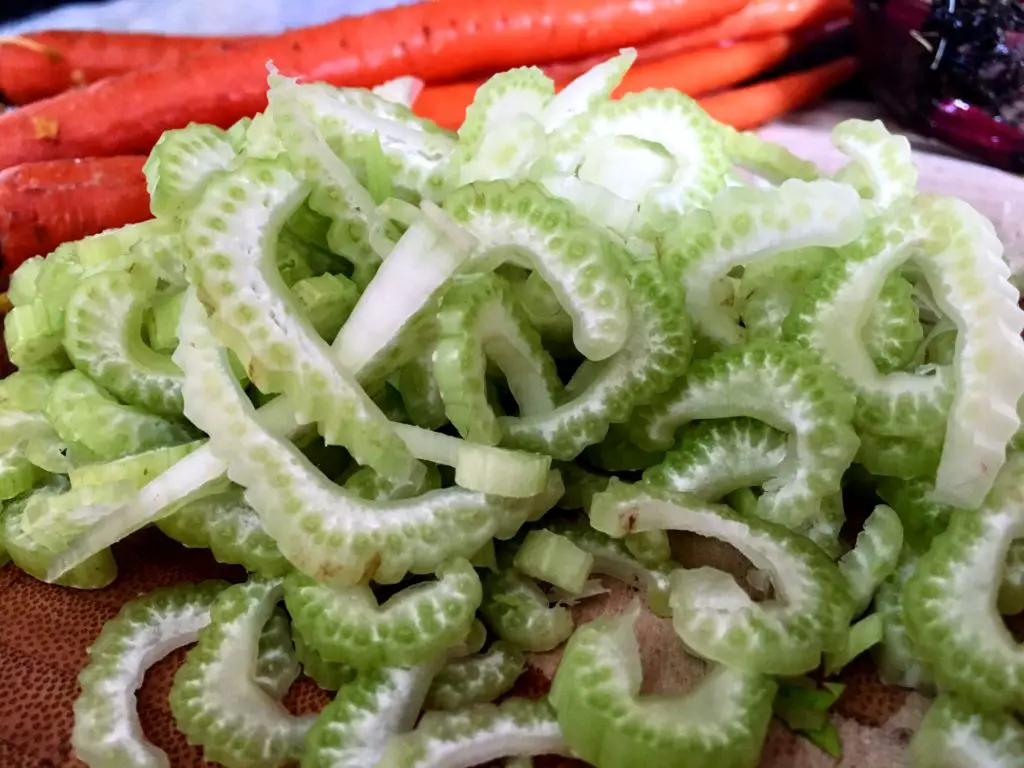
CELERY
Did you know that onions, carrots and celery form a culinary trinity called mirepoix? It’s a classic flavour base in French cooking, but it’s appropriate for Borscht.
Thinly slice the celery. If you have celery leaves, give them a quick chop, because those can go into the pot, too!
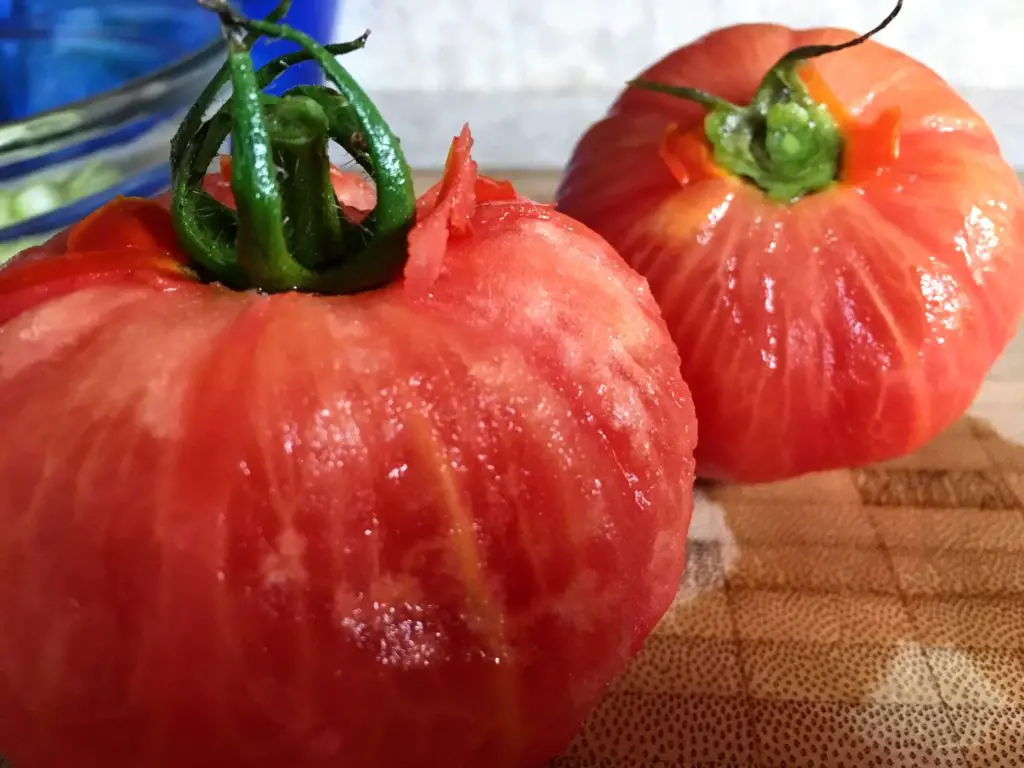
TOMATOES
Tomatoes add great flavour to a borscht soup. Grab a couple of fresh ones and peel them before chopping them. There’s no need to strain them. Keep those juices for the soup, and toss the peels in your freezer bag of scraps for broth. Waste not, want not!
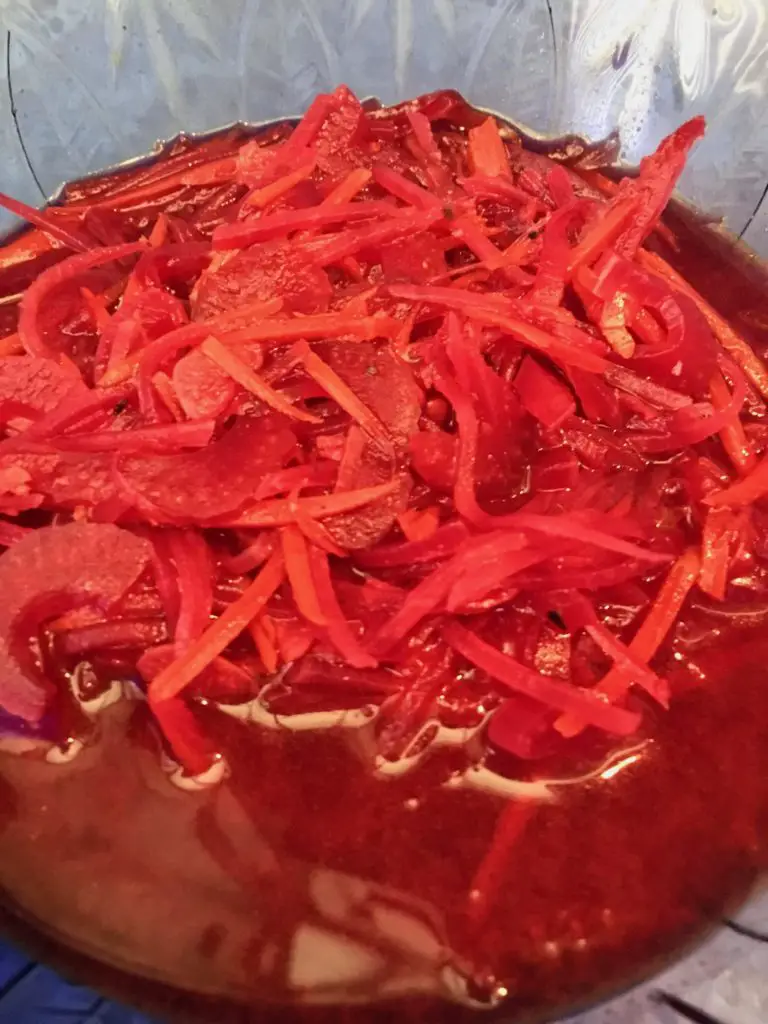
BEETS
Beets are at the heart of this recipe and without them, it wouldn’t be borscht.
This earthy root vegetable gives this soup its beautiful ruby colour.
VICTORY BORSCHT FOR THE WIN
This victory borscht is a real winner of a recipe because it only wants produce that comes from the garden.
Since women didn’t have the luxury of the cooking fats we’re accustomed to, like butter and olive oil, they relied heavily on meat drippings, which this victory borscht is free of.
This soup is entirely oil-free, but it’s full of flavour and nutrients. The original recipe, which I adapted from Marguerite Patten’s Victory Cookbook, calls for beef broth, but it can easily be made vegan by substituting vegetable broth.
Moreover, this jewel-red beauty is quite possibly the easiest soup you’re ever going to make.
Women worked long and hard hours during WWII, but they still needed to put food on the table for their families once they got home. They couldn’t very well buy a rotisserie chicken from the grocery store or stop at Taco Bell on the way home from the ammunitions factory, now could they? It didn’t matter how exhausted they were, they still had to eat.
This recipe would have been ideal because once the prep is out of the way, you can walk away and let the soup simmer away while you do other things.
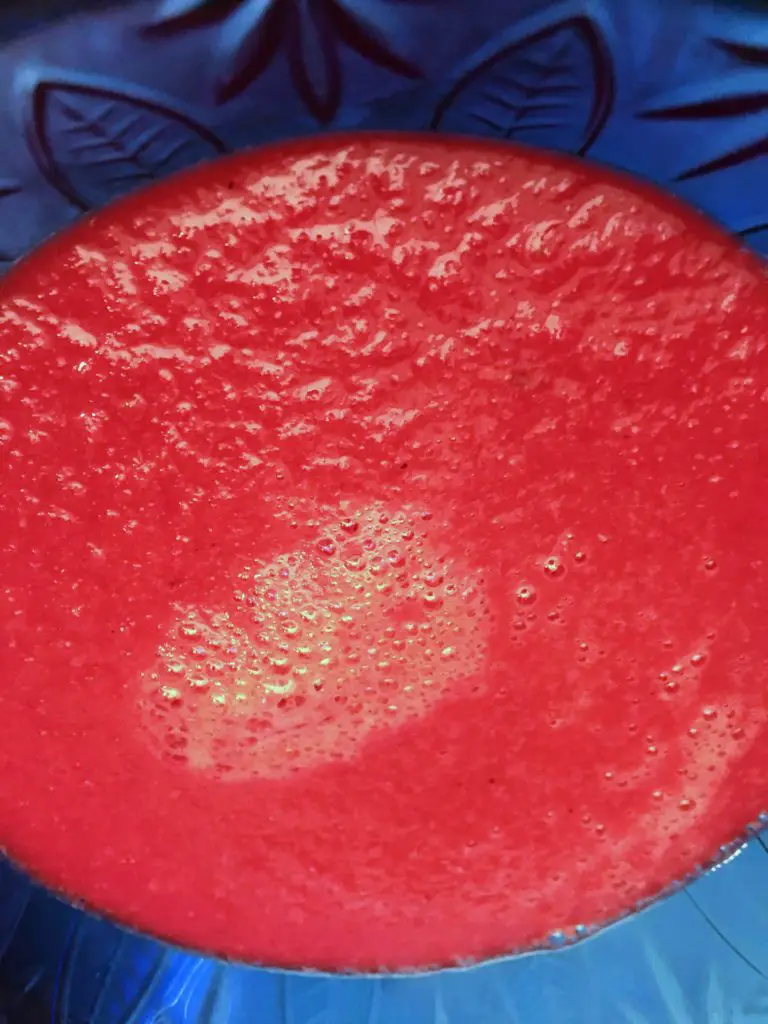
SHREDDING FOR VICTORY BORSCHT
Did you know that shredding vegetables makes them easier to digest? It also cuts down the cooking time and makes them more uniform.
I love using my Börner julienne slicer for the task. It’s quick, and I don’t need to bring out any hard-to-wash equipment.
HOW TO SERVE VICTORY BORSCHT
Once the soup is seasoned to suit your taste, it’s time to serve it up.
You can either serve it as is in all its chunky glory, or you can blend it. There’s no right or wrong answer here. I like it both ways, but if I want something creamier, I’ll run it through my Vitamix.
The finishing touch is a dollop of sour cream. This is optional, of course, but if you like sour cream, you’ll be happy with the addition.
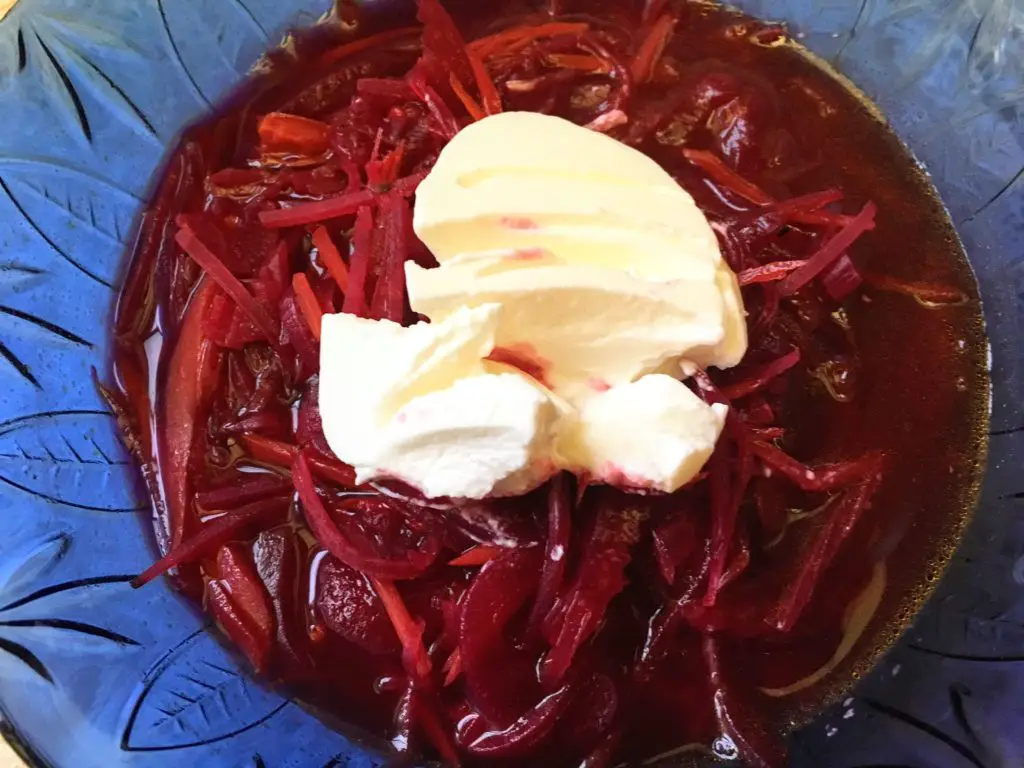
WHAT ARE YOUR THOUGHTS?
Have you made borscht before? How was it different? What about wartime recipes in general? Is there anything in this post that surprised you? Should I continue to elaborate on wartime rationing and recipes in future posts? Please let me know in the comments below!
SHOP THIS POST
Victory Cookbook by Marguerite Patten (I adapted her recipe)
Vitamix (what I use to blend)
OTHER POSTS YOU MIGHT LIKE
Broth from Scratch with ScrapsFrugal Kitchen Rules: Waste Less & Save MoreThe Frugal Kitchen PantryRoasted Beet Salad with Orange Vinaigrette
VICTORY BORSCHT INGREDIENTS
1 onion
2 garlic cloves, minced
1 large beet, shredded
2 celery stalks, chopped
2 tomatoes, peeled and diced
5 medium carrots, shredded
2 tbsp apple cider vinegar
1.5 litres broth
VICTORY BORSCHT INSTRUCTIONS
Add all the ingredients to a dutch oven. .Bring to a boil, then let simmer for 1.5 hours.Remove from heat and season to taste with salt and pepper.Serve with a dollop of sour cream. If you wish, you may blend the soup.
PRINTABLE VICTORY BORSCHT RECIPE CARD
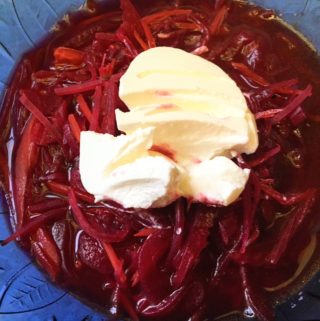
Victory Borscht: A WWII Recipe
Equipment
- Dutch Oven
- Grater
Ingredients
- 1 onion
- 2 garlic cloves minced
- 1 large beet shredded
- 2 celery stalks chopped
- 2 tomatoes peeled and diced
- 5 medium carrots shredded
- 2 tbsp apple cider vinegar
- 1 lemon wedge juice
- 1.5 litres beef or vegetable broth
- sour cream for garnish
Instructions
- Add all the ingredients to a dutch oven. .
- Bring to a boil, then let simmer for 1.5 hours.
- Remove from heat and season to taste with salt and pepper.
- Serve with a dollop of sour cream. If you wish, you may blend the soup.
Notes
WANT MORE RECIPES?
Do you like soup? Here are some more great soup recipes for you to check out!
Lindsay’s New England Corn Chowder from Our Future Homestead
Marisa’s Gut Healing Chicken Soup from Bumblebee Apothecary
Angela’s 5 Bean Crock-Pot Chili from Front Porch Blessings
Shannon’s Best Vegetable Soup from Shannon Torrens Simple Living
Anja’s Simple Celery Root Soup from Our Gabled Home
PIN IT FOR LATER
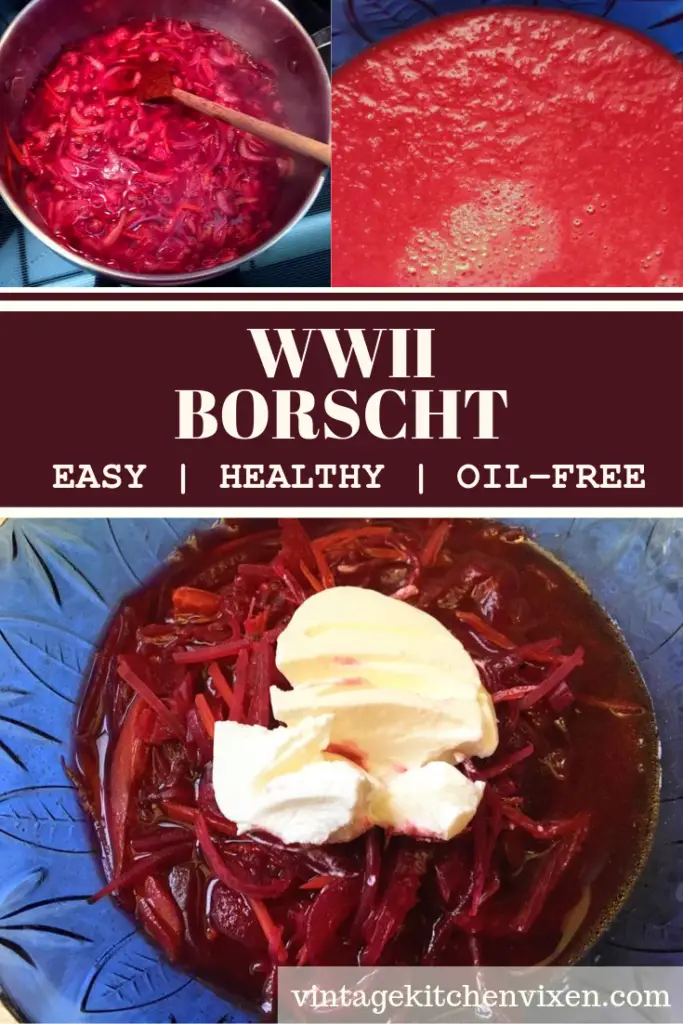
Love and gratitude,



Love the fact that it is fat free
Right?!? You don’t find that very often in traditional recipes.
Victory veggies! I love that. Your dishes always look amazing and your videos are excellent-bravo girl!!
Haha, isn’t that a hoot? Every vegetable I grow is a victory! Thank you so much for your kind words 🙂
This looks so yummy!!! We have often had borscht but I’d really like to try your version 🙂
Thank you! I hope you let me know how it goes if you end up trying it out!
I’ve been making this basic recipe for 60 yrs. I use more beets though. What is missing is the dill, lots of dill lol. Dill goes so well with sour cream.
I adore dill! I’ll need to add some to the next batch I make. Thank you for the tip!
I second the dill comment. My Grandma used to boil the beets with skins on, let them cool and then the skins slip right off. Then shred them into the borscht. The Russian Tea Room used to serve with a perogy in the bottom. Yay for Eastern Europe!
I need to try this method of shredding cooked beets. That sounds so much easier! I also love the sound of having a surprise pierogi in my borscht, ha!